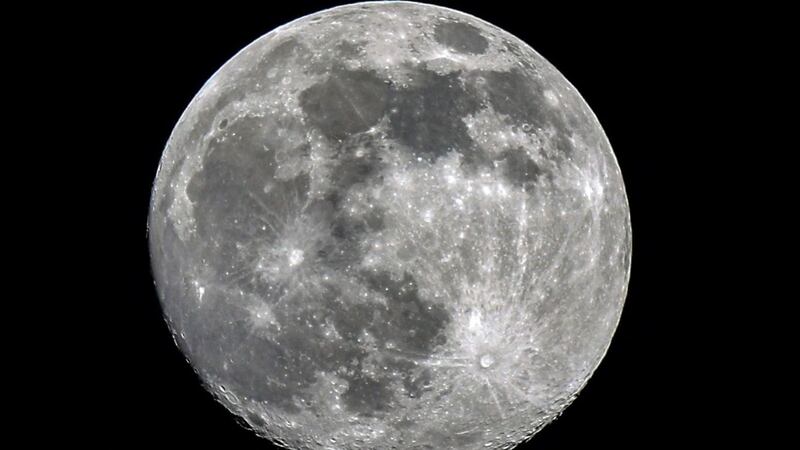The first Moon rocks to be brought back to Earth in more than 40 years are almost two billion-year-old, analysis has revealed.
Researchers studying samples returned by China’s Chang’e-5 mission report that their findings suggest the Moon was volcanically active later than expected.
The volcanic rocks fill the gap between the three billion-year-old samples collected by Apollo and the one billion-year-old impact craters whose ages have been determined from the analysis of samples.
Determining the precise age of this “young” lava flow on the Moon also provides calibration of the crater-counting technique used to date the surfaces of other moons and planetary surfaces.
The Chang’e-5 mission – the first lunar sample return since the 1970s – landed in Oceanus Procellarum, an area of solidified lava from an ancient volcanic eruption.
It collected samples from the surface and returned them to Earth for laboratory analysis.
Researchers found the rocks had formed from magma that erupted about two billion years ago, later than other known volcanic lunar samples.
Scientists say there must have been a heat source in the region to explain this late volcanic activity.
But there was no evidence for high concentrations of heat-producing radioactive elements in the deep mantle of the Moon, which had previously been suggested as the cause of these lavas.
Therefore, alternative explanations – like tidal heating – are required, researchers say.
Co-author Brad Jolliff, is the Scott Rudolph professor of earth and planetary Sciences in Arts & Sciences and director of the Washington University in St Louis McDonnell Centre for the Space Sciences.
He said: “It is the perfect sample to close a two-billion-year gap.
“Of course, ‘young’ is relative. All of the volcanic rocks collected by Apollo were older than three billion years.
“All of the young impact craters whose ages have been determined from the analysis of samples are younger than one billion years. So, the Chang’e-5 samples fill a critical gap.”
The Moon is about 4.5 billion years old – almost as old as the Earth, but unlike the Earth it does not have the erosive or mountain-building processes that tend to erase craters over the years.
Scientists have taken advantage of the moon’s enduring craters to develop methods of estimating the ages of different regions on its surface.
The findings are published in the Science journal.








